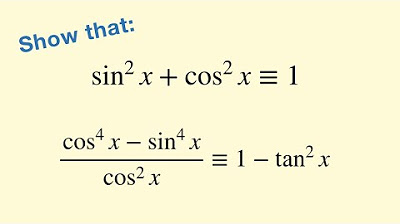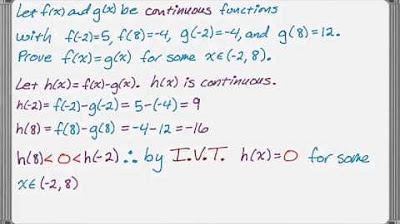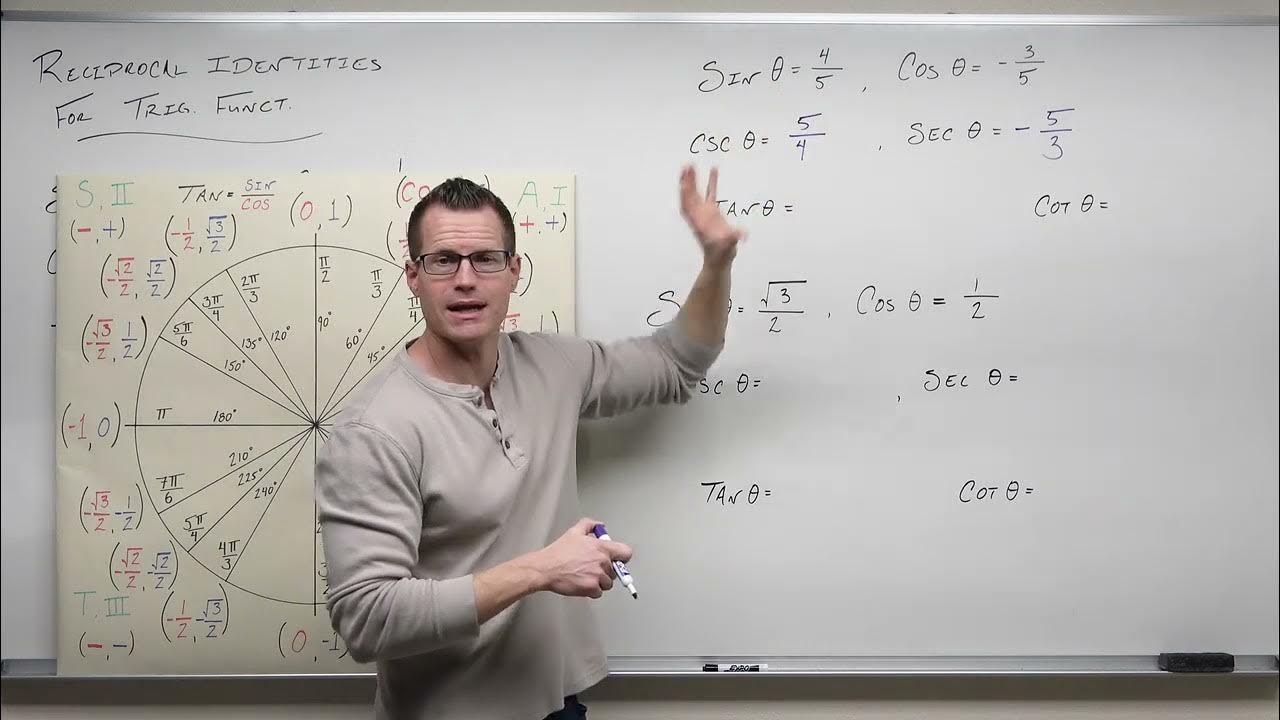Zero Knowledge Proof (with Avi Wigderson) - Numberphile
TLDRThe video script delves into the concept of zero-knowledge proofs, explaining how they allow one party to prove a statement's truth without revealing any information. It uses the analogy of map coloring to illustrate how these proofs can be interactive and convincing without imparting new knowledge, highlighting their significance in cryptography and computational complexity.
Takeaways
- 📚 Proofs are the foundation of mathematics, providing certainty about mathematical facts through logical steps that can be verified by anyone.
- 🔍 The process of verifying a proof is usually simpler than creating the proof itself, requiring less ingenuity and more straightforward checking of the proof's steps.
- 🎯 Zero-knowledge proofs are a special kind of proof that convinces a verifier of a statement's truth without revealing any information about the proof itself.
- 🕵️♂️ In a zero-knowledge proof, the verifier is assured that they cannot be fooled into accepting a false claim, maintaining the integrity of the verification process.
- 📜 The concept of zero-knowledge proofs can be illustrated with the example of a mathematician proving a major theorem without revealing the proof's details, thus protecting their intellectual property.
- 🧩 The idea of zero-knowledge proofs was formalized in the context of cryptography, showing that any statement with a proof can also have a zero-knowledge proof.
- 🤝 Zero-knowledge proofs are interactive, involving a back-and-forth between the prover and the verifier, unlike traditional proofs which are static.
- 🎲 The interactive nature of zero-knowledge proofs allows for the possibility of the verifier generating the conversation on their own, without needing the prover's input, thus preserving zero knowledge.
- 🌐 NP completeness is a fundamental concept in computational complexity that shows any mathematical statement can be translated into a problem about map coloring, which is a simple yet powerful representation.
- 🔗 The connection between NP completeness and zero-knowledge proofs is that every statement with a proof can be mapped to a problem of three-coloring a map, which can then be used to create a zero-knowledge proof.
- 🏆 The importance of NP completeness and the foundational work in cryptography have been recognized with prestigious awards, highlighting the impact of these concepts on the field.
Q & A
What is the fundamental concept of a proof in mathematics?
-A proof in mathematics is a logical argument that establishes the truth of a statement. It is the basis of certainty in mathematics, allowing anyone to verify the correctness of the statement by following the proof's steps.
How does a zero-knowledge proof differ from a regular proof?
-A zero-knowledge proof is a method where the prover can convince a verifier of the truth of a statement without revealing any information about the proof itself, unlike regular proofs which can reveal the details of the proof process.
Why are zero-knowledge proofs considered useful?
-Zero-knowledge proofs are useful because they allow sensitive information to be verified without the risk of revealing that information. This is particularly valuable in scenarios where privacy and security are paramount.
Can you provide an example of a zero-knowledge proof scenario mentioned in the script?
-One example given in the script involves a junior math professor who claims to have proved the Riemann Hypothesis. Using a zero-knowledge proof, the professor could convince their chairman of the proof's validity without revealing the proof itself, thus protecting their intellectual property.
What is the significance of the Riemann Hypothesis in the context of the script?
-The Riemann Hypothesis is used as an example of a significant mathematical problem whose proof could be demonstrated using a zero-knowledge proof, without revealing the proof's details to the verifier.
How does the concept of NP completeness relate to zero-knowledge proofs?
-NP completeness is a concept in computational complexity that shows every statement with a proof can be translated into a problem of three-coloring maps, which is an NP-complete problem. This translation is essential for creating zero-knowledge proofs for any mathematical statement.
What is the four-color theorem, and how does it relate to the discussion of zero-knowledge proofs?
-The four-color theorem states that any planar map can be colored using four colors so that no two adjacent regions share the same color. It is related to the discussion as an example of a problem that can be used to demonstrate the concept of zero-knowledge proofs through map coloring.
How does the script illustrate the process of a zero-knowledge proof using map coloring?
-The script describes a process where the prover places the color for each region of a map inside an envelope, and the verifier can challenge the prover by asking to open specific envelopes. The prover can change the colors in the envelopes without the verifier knowing, thus maintaining zero-knowledge while still proving the map is colorable.
What is the role of interaction in zero-knowledge proofs?
-Interaction is a key component of zero-knowledge proofs. The verifier can ask questions or make challenges, and the prover responds without revealing the proof, ensuring that the verifier is convinced of the claim's truth without gaining any additional information.
How does the script explain the concept of NP completeness in the context of cryptography?
-The script explains that NP completeness is a fundamental concept in cryptography that allows for the creation of zero-knowledge proofs for any mathematical statement. It captures the difficulty of proving theorems and shows that if an efficient algorithm for an NP-complete problem like map coloring existed, it could be used to prove any theorem efficiently.
What is the P vs NP question, and why is it significant in the context of the script?
-The P vs NP question is a major unsolved problem in computer science that asks whether every problem in NP (nondeterministic polynomial time) can be solved in polynomial time (P). It is significant in the script because it relates to the efficiency of algorithms for proving theorems and the possibility of creating efficient zero-knowledge proofs.
Outlines
📚 Introduction to Zero-Knowledge Proofs
The speaker begins by explaining the concept of zero-knowledge proofs, emphasizing the fundamental role of proofs in mathematics as a means to establish absolute truth. They illustrate how proofs are convincing and verifiable by anyone, even without prior knowledge of the proof itself. The introduction of zero-knowledge proofs as a type of proof that does not reveal any information to the verifier beyond the validity of the claim is discussed, highlighting the paradoxical nature of being convinced without gaining any new information.
🔍 The Concept and Utility of Zero-Knowledge Proofs
This paragraph delves deeper into the concept of zero-knowledge proofs, using the example of a mathematician proving a major theorem without revealing the proof's details to prevent potential theft of intellectual property. The interactive nature of zero-knowledge proofs is introduced, where the verifier can ask questions without gaining substantial knowledge, ensuring that the prover's claim is true without being deceived by false claims.
🎲 Zero-Knowledge Proofs and Their Relation to Cryptography
The speaker discusses the historical context of zero-knowledge proofs, introduced by Goldreich, Micali, and Rackoff in the mid-80s, and the subsequent proof by Goldreich and Micali that every statement with a proof also has a zero-knowledge proof. The paragraph explains the interactive aspect of these proofs and how they can be used to demonstrate the truth of a statement without transferring knowledge, utilizing the concept of NP completeness and its significance in computational complexity.
🖼️ The Map Colouring Problem and Zero-Knowledge Proofs
The map colouring problem is presented as an example to illustrate zero-knowledge proofs. The speaker explains how the ability to colour a map with a limited number of colours without any two adjacent regions sharing the same colour can serve as a metaphor for zero-knowledge proofs. They describe a process where the prover can demonstrate the colouring without revealing the specific colours used, thus maintaining the zero-knowledge aspect of the proof.
🛑 The Challenge of Creating a Zero-Knowledge Proof
The paragraph discusses the challenge of creating a zero-knowledge proof for a claim, using the map colouring example to explain how the prover can convince the verifier of their knowledge without revealing the information itself. The concept of commitment, like placing colours in envelopes, is introduced, along with the idea of randomizing the process to ensure that the verifier cannot gain knowledge from the proof.
🔄 The Process of Zero-Knowledge Proofs and Their Implications
The speaker elaborates on the process of zero-knowledge proofs, focusing on the method of randomly renaming colours to demonstrate that the verifier could have generated the same conversation without the prover's involvement. The paragraph touches on the implications of zero-knowledge proofs for cryptography and their potential applications in various fields, emphasizing the importance of NP completeness in creating these proofs.
🔐 The Power of NP Completeness in Zero-Knowledge Proofs
The final paragraph highlights the power of NP completeness in the context of zero-knowledge proofs. The speaker explains how any mathematical statement, true or false, can be translated into a map, and if a proof exists, it can be translated into a three-colouring of that map. The conversation concludes with a discussion on the potential of zero-knowledge proofs in cryptography and the philosophical implications of creating proofs that do not transfer knowledge.
Mindmap
Keywords
💡Zero Knowledge Proofs
💡Proof
💡Verifier
💡Prover
💡Riemann Hypothesis
💡NP Completeness
💡Map Colouring
💡Formal Proof
💡Cryptography
💡P vs NP Question
💡Algorithm
Highlights
Zero-knowledge proofs are a type of proof that reveals no information to the verifier, ensuring the truth of a claim without exposing the underlying evidence.
Proofs in mathematics are based on logical steps that can be followed by anyone to verify the truth of a statement, without the need for ingenuity.
The concept of zero-knowledge proofs was introduced by Goldreich, Micali, and Rackoff in the mid-80s, revolutionizing the field of cryptography.
Every statement that has a proof also has a zero-knowledge proof, as demonstrated by Goldreich and Micali, showcasing the power of cryptographic techniques.
Zero-knowledge proofs are interactive, involving a prover and a verifier in a process that does not increase the verifier's knowledge beyond the truth of the claim.
The process of proving zero-knowledge involves a challenge-response mechanism, where the verifier can challenge the prover without gaining new information.
The concept of NP completeness plays a crucial role in zero-knowledge proofs, allowing any mathematical statement to be translated into a map-coloring problem.
The four-color theorem is related to zero-knowledge proofs, as it demonstrates the complexity of map-coloring problems that can represent any mathematical statement.
The Riemann Hypothesis, a famous unsolved problem in mathematics, is used as an example to illustrate the potential application of zero-knowledge proofs in protecting intellectual property.
The idea of renaming colors in map-coloring illustrates the concept of multiple valid proofs for a single statement, which is key to the randomization in zero-knowledge proofs.
The Cook-Levin theorem, a fundamental result in computational complexity, underpins the translation of any mathematical statement into a map-coloring problem.
Zero-knowledge proofs are not just theoretical; they have practical applications in cryptography, digital currencies, and secure communication.
The process of creating a zero-knowledge proof involves a balance between convincing the verifier of the truth without revealing any information about the proof itself.
The concept of a 'secret third party' is debunked in the context of zero-knowledge proofs, emphasizing the self-sufficiency of the proof system without external trust.
The transcript discusses the potential and limitations of zero-knowledge proofs in the context of formal mathematical proofs and their translation into computational problems.
Transcripts
Browse More Related Video

Intro to Trigonometric Identities - part 1

Proof Symbols Used in Math

Using the Intermediate Value Theorem Examples

Proving Triangle Congruence and Similarity

5.1.2 Discrete Probability Distributions - Probability Distributions and Probability Histograms

Reciprocal Identities in Trigonometry (Precalculus - Trigonometry 9)
5.0 / 5 (0 votes)
Thanks for rating: